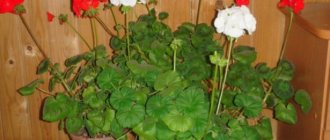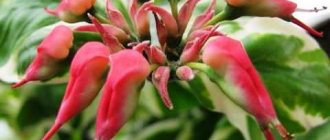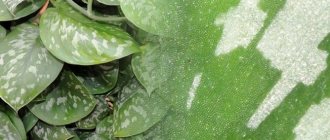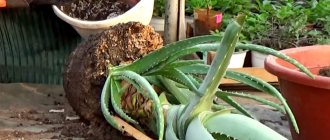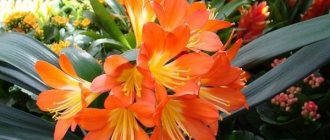It should be noted that there are fragrant varieties of geranium and pelargonium. The difference for the buyer, first of all, is that geraniums are predominantly open-ground garden plants, while pelargoniums are almost always grown indoors. Otherwise, these are plants belonging to the same family Geranium, and ordinary people often confuse them with each other, calling pelargonium geranium, and vice versa. Within the framework of this material, all varieties of indoor flowers that are conventionally included in the group of fragrant geraniums will be considered.
General information
Pelargonium stands out among all kinds of geraniums. This elegant herbaceous plant is valued by amateur gardeners for its delicate foliage and characteristic pleasant aroma. At the slightest movement from the breeze or from touching the leaves, a light spicy smell spreads around the plant.
For the first time, Europeans discovered a wonderful plant on the distant South African coast. Three hundred years have passed since this discovery.
Breeders have developed many varieties. They differ in the shapes and sizes of leaves, and have different colors of flowers. But they are all united by the peculiarity of pelargonium to emit a smell, due to the presence of specific glands located on the leaves. Fragrant geranium releases phytoncides in the room. They have an antimicrobial effect and help improve sleep.
Essential oils, various organic acids, flavonoids with antioxidant properties, and other compounds found in the plant are used in medicine, perfumery, and even in cooking.
The perennial is a rather tall herbaceous branched bush. Its height reaches about one meter. The fibrous root system is dense and strong. The leaves are carved, strongly dissected, and have a beautiful light green color.
Some varieties of fragrant geraniums bloom very rarely at home. The small flowers are pale pink. Breeders carefully preserve varieties with the scent of roses, herbs, and citrus fruits.
Medicinal properties of fragrant geranium
Geranium, like many representatives of other species, has a certain set of medicinal properties. Thanks to them, the plant is actively used in folk medicine. Its use has been known for several centuries. The glandular hairs that cover the leaf blades contain a lot of essential oil, which is why the plant exudes a pleasant aroma. The substance contains many nutritional elements. Thanks to them, ground leaves can be used as analgesic and anti-inflammatory compresses. These are not all the medicinal properties of fragrant geranium; we will look at them in more detail later in the article.
The pleasant smell that fragrant geranium exudes has a beneficial effect on the human nervous system. Lemon aroma increases performance, gives strength and vigor. Therefore, some gardeners do not recommend placing the plant in the bedroom or in recreation areas, as the strong smell can cause sleep disturbances. It is best to place lemon geraniums in your work area. It is also known that such a scent can get rid of unpleasant third-party odors once and for all. Try placing a plant in the kitchen and you will be surprised.
The pink aroma of geranium can set you in a pleasant romantic mood. These plants are recommended to be grown under bedroom windows or placed next to the bed. The pink scent helps to get rid of severe psychological trauma, feel attractive and increase self-esteem. When placed next to the bed, the rose aroma promotes good sleep with pleasant dreams.
The apple scent exuded by one of the varieties of fragrant geranium sets household members up for friendly conversations. He always easily cheers you up. The smell of an apple is always associated with lightness, triumph and pleasant memories. Place such geraniums in the halls and a favorable atmosphere will always reign in the house.
Fragrant varieties of pelargonium
To enhance the natural smell, hybrid varieties were bred. With the lightest touch, the delicate leaves smell deliciously of peaches, apples, tart nutmeg, lemons or mint. There is even a variety with a pine scent.
Varieties of indoor fragrant geranium have a variety of leaf colors, attract with shades of flowers, and fascinate with aromas:
- Mabel Gray (lemon). The variety has a strong lemon aroma. The plant has rough leaves and pronounced veins. There is pubescence on the inside of the leaves. This is a flowering variety. It is decorated with umbrellas of small lilac-pink inflorescences.
- Spicy peppermint. The spreading plant has thin carved leaves of gray-green color. It blooms with medium-sized pale pink inflorescences. Exudes a bright mint aroma. Responsive to good care and feeding.
- Apple cider. A compact variety that blooms with tiny white flowers. The small leaves have a round shape and folded edges. Has an unusual apple aroma. Loves regular watering.
- Enchanting. This variety will fit perfectly into a garden composition. The spectacular shrub surprises with the golden edges of large leaves. Has a wonderful lemony pink summer scent. In indoor conditions, this fragrant geranium grows reluctantly.
- Lady Plymouth. This graceful plant is great for garden containers. The openwork light green crown consists of leaves with a white edge. Fragrances with the fresh aroma of a blooming rose. Watering should be moderate.
Where and how to plant it?
Indoor geranium is considered a non-capricious flower (find out all about the types and varieties of indoor geranium here). Despite the fact that it is a native of warm countries, it easily tolerates cold winters of temperate latitudes. The most suitable place for the plant is a spacious room with plenty of light and fresh air.
Herbalists advise placing the flower in the bedroom, as Pelargonium graveolens improves sleep. It also cleans the air well from germs and unpleasant odors, so the second location option would be the kitchen. In summer, the flower can be taken outside, but hidden under a canopy from direct sunlight.
For the full development of geraniums, it is important to choose the right pot. For an adult plant, the appropriate size is 20-25 cm in diameter and 3-4 cm in height
It is preferable to choose clay as the material for the planting container. In a plastic flowerpot, the root system rots. The container should be updated as the plant grows. If the flower does not have enough space, it begins to die.
Lighting and location
Lemon geranium is a light-loving flower, but can grow even with little light in the back of the room. It will immediately let the owner know about the lack of lighting by its appearance. If there is not enough light, the leaves will turn light green. The plant itself will stretch upward, the shoots will be thin and long. To correct the situation, you need to place the flower in the sun for about 6 hours. This is exactly how much time a day geraniums need for full growth.
In a room, it is better to place geraniums on window sills on the western or eastern side. At the same time, the place must be completely protected from possible drafts. It is not recommended to place the flower under a stream of hot or cold air, that is, directly near heating devices or under an air conditioner.
To stimulate flowering, additional artificial lighting should be used.
Soil requirements
For planting and replanting lemon geranium, choose a special or universal soil.
The following components, taken in equal proportions, are considered the optimal composition for geranium:
- coarse fractional river sand;
- peat;
- charcoal;
- humus;
- turf land.
Soil acidity plays an equally important role in the further growth of Pelargonium graveolens. She does not tolerate a drop in pH to 5.5, in which case she stops feeding. The ideal acidity ratio is pH 6.5. The soil should be neutral or slightly acidic.
In the open ground
Fragrant pelargonium is grown both at home in pots and in the garden in open ground. Growing plants at home is not at all troublesome, but caring for fragrant geraniums planted in the garden requires replanting every autumn. Originally from Africa, the plant does not tolerate Russian cold. You need to carefully dig up the bush and store it in a cool place at + 10 ˚C all winter. But geraniums in the garden grow into a large bush over the summer. It is difficult to transplant without breaking the fragile branches. Experienced gardeners dig the plant into a flowerbed in a pot in the spring. This will help relocate the pelargonium in the fall.
Geranium loves fresh air. As soon as the temperature allows, it is moved to a glazed balcony or insulated terrace.
What it is?
Fragrant geranium belongs to the Geraniaceae family. The homeland of the plant is South Africa. It is found in South Africa, Mozambique, Zimbabwe. English sailors brought the plant to Europe from the southern continent back in the 17th century. Geranium has taken root in Great Britain; the largest nurseries of the fragrant perennial have been created here. The fragrant shrub came to Russia in the 17th-19th centuries. It was grown in the greenhouses of noble nobles.
In the Cape Province of South Africa, a close relative of the fragrant geranium is common - such a houseplant as fragrant or most fragrant (fragrant) pelargonium (Pelargonium odoratissimum). You will learn more about fragrant geranium here, and read about the features of the indoor variety here.
The worldwide spread of geranium was facilitated by its unpretentiousness and adaptability to local conditions. The fragrant indoor plant is grown in pots and containers. In the warm season, it is used to decorate terraces, paths, mixborders, and flower beds.
The roots are tuberous. The flowers are small, white, collected in inflorescences. The leaves are covered with many silky hairs , which, when touched, emit a persistent apple-mint scent.
Houseplants
Fragrant geraniums receive good care at home.
The photo shows all the beauty of this grateful, very unpretentious plant.
Recommendations from experienced gardeners will help you grow a wonderful indoor plant:
- Although geraniums are light-loving, they tolerate placement on a north window or at a distance from the window quite easily. Still, the optimal place for them would be western or eastern windows. In winter, it is better to illuminate plants with lamps. Due to lack of lighting, pelargonium branches stretch out and the leaves turn pale.
- A distinctive property of geranium is that it can accumulate moisture in its stems and leaves. But it does not tolerate excessive humidity. Therefore, pelargonium does not need to be sprayed. Watering is carried out as the soil dries.
- In winter, it is best to place the plant on a cool windowsill, where the temperature is about 16˚C. From spring to autumn cold, pelargonium will feel great on an open balcony or terrace.
- When a plant lacks nutrition, it becomes lethargic and pale. The leaves become smaller and flowering stops. Fragrant geranium is fed with liquid complex fertilizers. You cannot add fresh organic matter to the soil.
- Proper pruning will make the bush more luxuriant. The elongated stems are pinched, leaving a couple of leaves.
Proper care will help the plant develop harmoniously and lushly.
Care
Temperature conditions
You can grow fragrant geranium not only at home , but also on the terrace and loggia.
It is important that there is no wind or draft. The optimal temperature regime for the plant is 18-20 degrees Celsius in summer and spring.
In autumn the temperature should not be below 10 degrees . At lower rates, the flower may die.
Watering
It is necessary to moisturize pelargonium regularly, but avoid overmoistening. The next watering should be done only after the soil in the container has dried. The plant does not have any special requirements for air humidity, so it grows well in high and low humidity.
Top dressing
In the spring, the crop needs to be fed with phosphorus fertilizers, and in the fall, potassium compounds must be added. During flowering, phosphorus and potassium must be added together. Iodine water has a positive effect on the growth of leaves and flowers. To prepare the solution, dilute 1 drop of iodine in 1 liter of water. There is no need to feed the plant in winter.
Read more about the secrets of caring for fragrant geraniums at home in a separate article.
Correct fit
To replant pelargonium, you need to select a flower pot that matches the size of the plant’s root system. It should be only a couple of centimeters wider than the previous one.
In a spacious pot, geranium will develop poorly and there will be a risk of waterlogging. Possible root rot.
To prevent moisture from stagnating, a layer of expanded clay is placed on the bottom. After replanting, water well to shrink the soil mixture.
Fragrant pelargonium differs from other types of geraniums in that it does not like acidic soil. Peat is contraindicated for her.
Properly selected soil composition will ensure good plant development and abundant flowering.
Where and how to plant it?
Indoor geranium is considered a non-capricious flower (find out all about the types and varieties of indoor geranium here). Despite the fact that it is a native of warm countries, it easily tolerates cold winters of temperate latitudes. The most suitable place for the plant is a spacious room with plenty of light and fresh air.
Herbalists advise placing the flower in the bedroom, as Pelargonium graveolens improves sleep. It also cleans the air well from germs and unpleasant odors, so the second location option would be the kitchen. In summer, the flower can be taken outside, but hidden under a canopy from direct sunlight.
For the full development of geraniums, it is important to choose the right pot. For an adult plant, the appropriate size is 20-25 cm in diameter and 3-4 cm in height
It is preferable to choose clay as the material for the planting container. In a plastic flowerpot, the root system rots. The container should be updated as the plant grows. If the flower does not have enough space, it begins to die.
Lighting and location
Lemon geranium is a light-loving flower, but can grow even with little light in the back of the room. It will immediately let the owner know about the lack of lighting by its appearance. If there is not enough light, the leaves will turn light green. The plant itself will stretch upward, the shoots will be thin and long. To correct the situation, you need to place the flower in the sun for about 6 hours. This is exactly how much time a day geraniums need for full growth.
In a room, it is better to place geraniums on window sills on the western or eastern side. At the same time, the place must be completely protected from possible drafts. It is not recommended to place the flower under a stream of hot or cold air, that is, directly near heating devices or under an air conditioner.
To stimulate flowering, additional artificial lighting should be used.
Soil requirements
For planting and replanting lemon geranium, choose a special or universal soil.
The following components, taken in equal proportions, are considered the optimal composition for geranium:
- coarse fractional river sand;
- peat;
- charcoal;
- humus;
- turf land.
Soil acidity plays an equally important role in the further growth of Pelargonium graveolens. She does not tolerate a drop in pH to 5.5, in which case she stops feeding. The ideal acidity ratio is pH 6.5. The soil should be neutral or slightly acidic.
Soil for planting
The soil for planting should:
- allows air and water to pass through well;
- be with the addition of fine expanded clay, sand, moss;
- have a neutral reaction;
- contain a small amount of nitrogen.
An inexperienced gardener can buy a ready-made mixture intended for geraniums in the store.
To independently compose a planting mixture, it is recommended:
- garden soil - ten parts;
- chopped sphagnum moss - one part;
- calcined sand - one part;
- humus - 1/2 part.
Frequent replanting of fragrant pelargonium is not required. The soil and container are changed every year.
Pelargoniums “Unique” – Unique pelargoniums
“Unicums” is an ancient group of pelargoniums, cultivated since the 60s of the 18th century. It was obtained by crossing royal and shiny (P. fulgidum) pelargoniums. The first variety was given the name Old Unique. Subsequently, all representatives of the group were united under the common name Unique pelargoniums.
Pelargonium “Unicum” – Robin's Unique
The flowers of "Unicums" are similar to the flowers of royal pelargoniums, but smaller in size. The leaves are dissected, sometimes with a fragrant odor. For example, the leaves of the Paton's Unique variety have a sweet, "peachy" aroma.
In the Victorian era, Unicums were very popular as plants for garden flower beds. The plants are quite large and tall. To bloom, their height must be 40-50 cm. It bushes poorly on its own, pinching or pruning is required.
Reproduction
There are several ways to propagate fragrant geranium:
- sowing seeds;
- using cuttings;
- dividing the bush.
Growing fragrant pelargonium from seeds is a labor-intensive process and quite long. For sowing, use a shallow container. The soil is spilled with a weak solution of potassium permanganate.
The seeds do not need to be sprinkled with soil; they germinate in the light. It is necessary to ensure high humidity by covering the crops with film. When shoots appear, the film is removed. Seedlings dive after three or four leaves appear. With this method of reproduction, maternal properties are not always transmitted. It is possible to obtain original plants.
For cuttings, cut off the tops of the shoots with two internodes. Cuttings take root easily in water. New bushes inherit all the properties of the previous plant.
In spring, propagation of fragrant geraniums is possible by the fastest method - dividing the mother bush.
It is taken out of the pot and cut so that independent bushes with a root system are obtained.
Zonal pelargoniums - Zonal pelargoniums
The most common species, represented by the largest number of varieties (more than 75 thousand). This pelargonium received the prefix “zonal” because on its leaf blades there is a “zone” painted in a different color - usually in the form of a ring or a spot of color in the center. When there is a lack of lighting, for example in winter, the “zone” disappears, and appears again in the spring.
Zonal pelargonium Orbit Scarlet Eye in balcony boxes
Pelargonium zonalis is a densely leafy, upright bush with flowers collected in umbrella racemes. Its leaves are pubescent and have a specific smell.
Cultivation of zonal pelargonium began in 1710. These inhabitants of window sills were tall and looked like a long tower with small inflorescences. Later, breeders began to develop shorter varieties that could be shaped by pinching. The first such varieties appeared in 1844.
According to the number of flower petals, zonal pelargoniums are divided into:
- non-double (Single Zonal pelargoniums) - the flower consists of 5 petals;
- semi-double (Semi-Double Pelargoium Zonale) - from 6-8 petals;
- terry (Double Zonal pelargoniums) – more than 8 petals.
Protection from diseases and pests
Geranium fragrant is a very healthy plant. But with poor or improper care, she can get sick and die.
Excessive watering increases the risk of fungal diseases:
- gray rot spores form plaque on leaves and buds;
- root rot with excessive soil moisture destroys the roots;
- stem rot is visible on the cuttings as black weeping spots. If cuttings are affected by it, it is impossible to cure them. The plant is destroyed and the soil is sterilized in the oven.
For treatment, “Fundazol”, “Fitosporin-M”, “Topaz”, “Gamair”, “Baktofit” are used.
When the air is dry and hot, spider mites are found on the leaves. Invisible at first glance, they suck the juice from the plant. Such leaves begin to turn yellow and then dry out, curling into a tube. Transparent mites are easy to spot upon careful inspection.
Prepare a soap solution with which the pelargonium and the ground underneath it are generously moistened. After a couple of hours, the plant is washed with clean water. The drugs Fitoverm and Anti-mite will help against the pest.
In summer, geraniums are attacked outdoors by thrips and whiteflies. To protect against them, plants are treated with the preparations “Aktara”, “Aktellik”, “Confilor”.
The process and characteristics of flowering
Geranium is an indoor plant that does not require a lot of time and effort to care for. She requires special care during flowering. As soon as the ovary appears, they evaluate whether anything will interfere with the formation of inflorescences.
Why is it important? For example, leaving the flower pots to be “torn to pieces” by direct sunlight, the flowers will not be bright. In other words, a flowering geranium will turn into a weed without taking into account the features from the list below
- In winter, they provide coolness to the plant. The main thing is to know moderation in everything: air temperature in the room below 10⁰C is unlikely to be beneficial, contributing to its premature awakening from a state of rest.
- The “south” window is an excellent place to place flowerpots with pelargonium. She loves the sun, but not in excess.
- Light and nutrition are two mandatory conditions that must be observed by gardeners who want to enjoy flowering all year round.
- The more branches, the more places for flowering. Shoots are pinched to enhance branching.
- As soon as the flowers fade, remove them.
- Pelargonium rejuvenates and gains strength for growth with regular pruning.
If geranium is grown from seeds, it will bloom 130-140 days after sowing. This will happen when the plant has gained good vegetative mass.
On a note. Many gardeners sow geraniums in pots in early February in order to enjoy the beauty of the flowering plant in May.
How long will flowering last? How many buds will appear? If you do not take care of the geranium, do not feed it or apply fertilizers rich in nitrogen, it will not bloom on the 130-140th day. Everything will happen late, and besides, there will be few flowers. This process will be affected by factors: lighting, watering, temperature.
When the amount of phytohormones is sufficient, the formation of flower primordia will occur. Soon exogenous shoots will appear on the growth cone. Sepals will form, then petals.
After the formation of the anther and filament, the stamens will develop. Carpels look like corymbose leaves on short stalks. Their lower side grows more intensively than the upper, resulting in the formation of a cavity with fused edges.
A style and stigma are formed in the upper part of the carpel. These processes occur inside the kidney.
Once the flower is developed, pollination must occur. To do this, the parts of the plant involved in this process must become free and accessible. It happens in different ways.
If you take a pot of geraniums out into the open air, insects will pollinate the flowers. Self-pollination or artificial pollination can also occur. As soon as this happens, the petals and stamens, stylodes and stigmas will fall off.
The calyx will be preserved, as it is needed to protect the ovary, which will later turn into a fruit. The flowering time of one flower is 3-10 days, and there are up to 50 of them in one inflorescence.
Read our material about what to do with faded flowers and whether you need to prune geraniums.
Application of pelargonium
The air around fragrant geranium is filled with volatile essential substances. They have a calming effect. Pelargonium is also an excellent antiseptic. The plant also has medicinal properties:
- for lumbar or joint pain, mashed leaves applied as a compress will help;
- fragrant geranium juice heals wounds and cuts on the skin;
- infusions or decoctions will relieve inflammation in the throat with sore throat, pain with otitis media;
- the smell of geranium is a powerful antidepressant (a pleasant aroma normalizes sleep, relieves fatigue, and relieves irritability).
Fragrant pelargonium is used as a raw material in the production of geranium oil. It is widely used in perfumery, cooking and pharmaceuticals.
But preparations containing fragrant geranium or its oils should not be used:
- pregnant women and children;
- people prone to allergies;
- patients with stomach ulcers and gastritis;
- people with low blood pressure.
Fragrant geranium is considered a talisman for the family hearth. Have this plant in your home. You will notice how psychological comfort and an atmosphere of coziness will settle in it.
Description of the plant: lemon geranium
Pelargonium is a species of the Geramiaceae family. Fragrant pelargonium is often called scented geranium. The confusion in names occurs because the plants have very similar foliage and are all identified as the same family.
Geranium is a plant called Herb Robert, as well as cranes-bill because of the shape of the fruit's seed pod, or storks-bill for its resemblance to a bird's beak.
Lat. Geranium (photo)
Pelargonium leaves have a very distinctive appearance. They have beautiful, sometimes deep slits, and their curved shape resembles a ruffled frill.
The color spectrum of their foliage is from light green to dark green, and the leaves of some species have cream, red and even purple colors. The plant reaches a height of 30 to 80 cm.
The geranium family of the genus Pelargonium has more than 200 species. Among them, the five most common types can be identified:
- decorative deciduous;
- ivy or balcony;
- fragrant;
- English, they are noble;
- zonal (standing).
You can also pay attention to the sixth type - these are succulent pelargoniums; they have fleshier stems and an original appearance, for which they are often used in ikebana and bonsai compositions. The leaves of the described flower are oblong, lush due to their dissection, and have a bright green color
With proper care, the plant grows up to half a meter in height, sometimes even higher
The leaves of the described flower are oblong, lush due to their dissection, and have a bright green color. With proper care, the plant grows up to half a meter in height, sometimes even higher.
But it is believed that the decorative function is better performed by a young flower, while the plant trunks have not yet become lignified. This plant looks very fresh and tender
Lemon geranium got its name because of the aroma it exudes with every slightest touch. What does this geranium smell like? The fragrance of this plant is reminiscent of the fresh and sparkling smell of lemon. This geranium is the most fragrant indoor plant.

